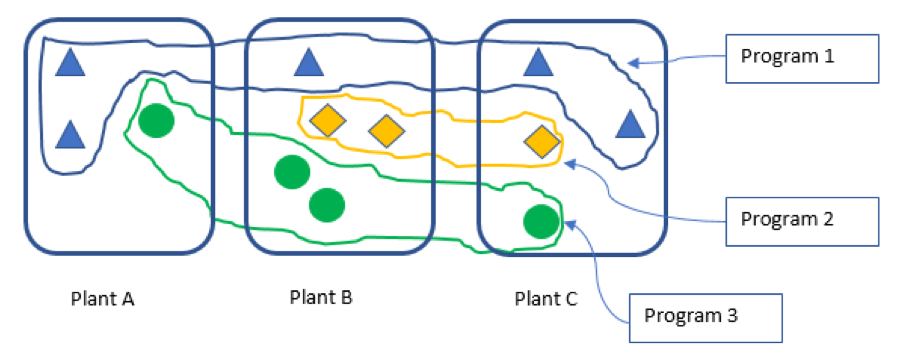by Alexis Devenin, MBA, PMP
A program is understood as a group of related projects with common strategic objectives that must be managed in a coordinated way. A project portfolio is defined as a group of high-level projects and programs with the focus of sustaining the strategy of a company. It is understood that the stakeholder of a project portfolio is the top management of the company.
There is a great number of project managers that must lead a group of projects from different stakeholders of their organizations. They have to manage a “portfolio,” not of high-level projects, but rather to address organizational requirements arising from different stakeholders and to cover different kinds of problems or opportunities. For instance, in an industrial plant, these projects can consist of replacement of old equipment, automation, safety improvement, machine monitoring, equipment modification to meet environmental standards, or to eliminate repetitive failures, energy efficiency improvements, etc. These multiple projects may not have been originated from top management or inspired by the company strategy or vision, but they have appeared by “spontaneous generation” at different levels and in different production units. As a group, they can be called “multi-project” instead of referred to as a “project portfolio” because they are not necessarily related to strategy, but instead, they correspond to local and punctual requirements.
The Project Management Institute (PMI) has dedicated standards and a certification for program management and for portfolio management. “Multi-project management” has not reached the same status as their fancy relatives “program management” or “portfolio management,” but multi-project management is the scenario in which a lot of project managers have to work.
Typically, the projects come from different production lines of the plant, or from different plants of the company, or from different units of the organization. In the same way that similar organisms have similar needs, similar units usually have similar requirements. It is convenient to identify a group of projects with similar contents or objectives and manage them as a project program.

Identifying similar projects and treating them as a program has several advantages. You can develop a pilot solution in one of the plants and then fine tune the solution for the next one. Once you arrive at a satisfactory solution, you can standardize the solution for the group of plants. Finally, grouping projects puts you in a good position to negotiate with contractors for better conditions.
Programs not only can arise from high-level management, but they can emerge naturally from requirements at the operational level.
About the Author
 Alexis Devenin is a Mechanical Engineer with his MBA and PMP certification. He is an Engineering Project Manager with 20 years of experience in the Steel, Mining and Renewable Energy industries. Connect with him at: www.linkedin.com/in/alexisdevenin
Alexis Devenin is a Mechanical Engineer with his MBA and PMP certification. He is an Engineering Project Manager with 20 years of experience in the Steel, Mining and Renewable Energy industries. Connect with him at: www.linkedin.com/in/alexisdevenin
